Did you know that just 2 square feet of rooftop garden can produce up to 20 pounds of fresh produce annually? This fact shows how powerful rooftop gardening can be in cities. By turning unused rooftops into green spaces, people in cities are finding new ways to live better lives.
Rooftop gardening is changing how we see city living. These green spaces on rooftops offer fresh, local food and help fight city problems. They cool the city, clean the air, and support many kinds of life.
Whether you want to grow vertical gardens, join a community garden, or just have your own herbs and veggies, rooftop gardening is a great choice. It lets you connect with nature and change your city into a greener place. Start exploring the world of city farming and see what your rooftop can do.
Key Takeaways
- Rooftop gardening turns unused spaces into green havens that make city living better.
- These green spaces give people fresh, local food and improve air quality and biodiversity.
- Rooftop gardens support sustainable farming, vertical gardens, and community projects.
- They help cool the city and manage stormwater, making cities more resilient.
- Getting involved in rooftop gardening can boost your mental health by lowering stress and improving focus.
What is Rooftop Gardening?
Rooftop gardening is a way to grow vegetables, herbs, and flowers on building rooftops. It uses city spaces that are often wasted. This method helps make cities greener and provides fresh produce and places for people to relax.
Difference Between Rooftop Gardens and Green Roofs
Many people confuse “rooftop gardens” and “green roofs.” But they are not the same. Green roofs cover buildings with plants to make the environment better. Rooftop gardens grow food or plants for beauty, helping with city farming.
Green roofs come in three types, based on how deep the soil is and how much care they need:
- Extensive Green Roof: This type has soil that’s 3 to 6 inches deep. It’s cheap to set up and doesn’t need much water.
- Semi-Intensive Green Roof: It has soil that’s 6 to 12 inches deep. It needs some watering and regular upkeep. It holds more stormwater than the extensive type.
- Intensive Green Roof | Roof Garden: This has deep soil for many plants, including trees. It needs a lot of care and a good watering system.
Rooftop gardens and green roofs both make cities greener. But they have different goals and ways of doing things. Rooftop gardens grow food or plants for beauty. Green roofs focus on making buildings better for the environment.
Benefits of Urban Rooftop Gardens
Environmental Benefits
Urban rooftop gardens bring many environmental benefits, making them key for sustainable cities. They can reduce air conditioning needs by up to [insert percentage]. This lowers energy costs and cuts down on greenhouse gases.
These gardens also help manage water by absorbing up to 75% of rainfall. This reduces stormwater runoff and helps urban drainage systems.
Rooftop gardens improve air quality by trapping up to 95% of harmful particles. They also lower city temperatures by up to 2 degrees Celsius. This makes cities cooler and more comfortable for everyone.
These gardens support local wildlife by providing homes for bees and butterflies. They connect the city with nature, creating a healthier ecosystem.
| Environmental Benefit | Impact |
|---|---|
| Reduced air conditioning demands | Up to 75% reduction |
| Rainfall capture | Up to 75% of rainfall |
| Particulate matter trapping | Up to 95% reduction |
| Urban air temperature reduction | Up to 2 degrees Celsius |
| Support for urban biodiversity | Habitats for pollinators |
Rooftop gardens use urban agriculture and sustainable gardening to turn city spaces into lively, green areas. They make cities better places to live by being good for the environment.
Types of Rooftop Gardens
Rooftop gardens offer city folks a chance to grow their own green spaces. There are two main types: container gardens and raised bed gardens. Each has its own benefits for city gardening.
Container Gardens
Container gardening lets you grow a wide range of plants in pots or planters. It’s perfect for small spaces and can hold everything from veggies to flowers. This method is great for rooftop gardening because it’s flexible.
Raised Bed Gardens
Raised bed gardens give you a deeper area to grow bigger plants or small trees. They’re great for growing crops and fit well on rooftops. These beds are raised, which means better drainage and easier access for gardeners.
Choosing between container and raised bed gardens depends on your space, plants, and design goals. Mixing both can make your rooftop look amazing and work well.
| Garden Type | Soil Depth | Plant Selection | Maintenance |
|---|---|---|---|
| Intensive Green Roofs | Over 12 inches | Diverse, including small trees | Weekly checks during summer |
| Semi-Intensive Green Roofs | 6-12 inches | Fruits, vegetables, and some flowers | Regular maintenance |
| Extensive Green Roofs | Less than 6 inches | Limited to slow-growing, shallow-rooted plants | Quarterly or semi-annual checks |
| Roof With Plant Containers | N/A | Highly flexible, depending on container size | Varied, depending on container and plant needs |
Understanding the different rooftop garden types helps city folks pick the best fit for their space and goals. This way, rooftops can become lush green spaces.
Urban Agriculture on Rooftops
As cities grow, urban agriculture is becoming a key solution. It helps with food security and tackles environmental issues. Rooftop gardening is a part of this, where people turn unused rooftop spaces into gardens.
Rooftop farming lets city folks grow their own food right in the city. It’s not easy because of the heat, wind, and lack of shade. But, new methods and plants make it work. Rooftop farms offer fresh, local food, cutting down on the need for long food transport.
Rooftop gardens are becoming popular worldwide for many reasons. They improve food security and help cool cities, making them healthier places. Rooftop farms also help cool buildings, cut down on carbon emissions, and make the air cleaner.
For rooftop gardens to succeed, buildings must be strong, have good waterproofing, and the right plants. Getting the community involved is also key. With careful planning, rooftop gardens can change cities for the better.
“Rooftop farming is a growing movement aiming to address urban sustainability goals such as food security, stormwater management, and waste management.”
Challenges of Rooftop Gardening
Starting rooftop gardens comes with its own set of challenges. One big worry is the building’s structure and how much weight it can hold. Choosing the right plants and materials is key to making sure the garden is safe and works well.
Structural Considerations
The roof’s weight limit is a big deal in rooftop gardening challenges. Using special systems to spread the weight out and choosing light materials helps solve this issue. Old buildings might not be strong enough for urban gardening. Engineers have to check if they can handle the extra weight by testing or inspecting the structure.
When planning rooftop gardens, think about how much everything weighs and how many people will be there at once. This ensures the garden is safe. Using light stuff like fiberglass, aluminum, and recycled glass chips helps with weight issues.
Getting to the rooftop is important for moving stuff around. You might need special lifts, elevators, or cranes to get materials up there.
- Good watering systems, like sprinklers or drip lines, are a must for rooftop gardens. They make sure plants get enough water.
- Drainage is key to stop water from pooling and causing stains. You might need special fittings to manage the water.
Overcoming these structural considerations means looking at weight limits, wind, and access to water and power. It also means finding new solutions and keeping things maintained well.
Innovative Rooftop Garden Designs
Rooftop gardens are changing the way we see urban spaces. They turn rooftops into green havens, not just for homes but also for businesses and public areas. These designs are making cities greener and more enjoyable.
These gardens can do many things at once. They can have places to sit, walkways, and even greenhouses for gardening all year. They become spots for social events, learning, and community activities. This helps city folks feel closer to nature.
Creating rooftop gardens can also boost the local economy. They support jobs in gardening, landscaping, and farming. This makes cities better places to live and work.
Diverse Design Elements
Rooftop gardens offer endless design options. You can choose from vertical gardens for small spaces to container gardens for flexibility. Raised bed gardens add structure, and hydroponic and aeroponic systems save water and increase efficiency.
Furniture and decor are key to making rooftops welcoming. Adding solar-powered features and water harvesting methods makes these spaces even more sustainable.
Innovative rooftop gardens change cities for the better. They mix nature, usefulness, and community in one place.
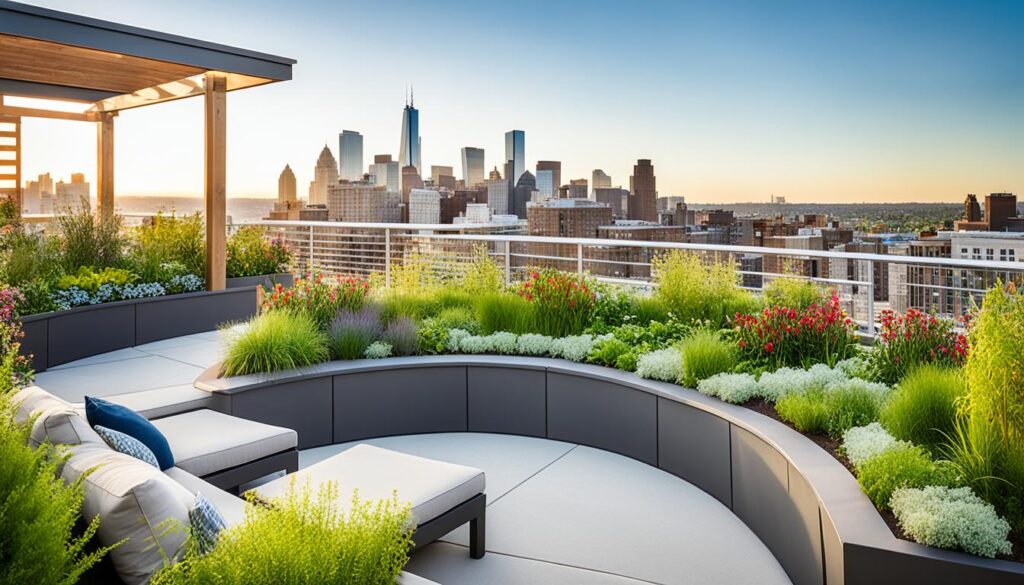
| Design Element | Benefit |
|---|---|
| Vertical Gardens | Maximize limited space, provide insulation, and purify the air |
| Container Gardens | Offer flexibility and easy maintenance |
| Raised Bed Gardens | Provide a sense of structure and organization |
| Hydroponic and Aeroponic Systems | Boost efficiency and water conservation |
| Solar-powered Features | Enhance sustainability and self-sufficiency |
| Water Harvesting Methods | Reduce reliance on municipal water sources and manage stormwater runoff |
“Rooftop gardens have the power to transform urban spaces, blending nature, functionality, and community engagement in a harmonious way.”
Community Engagement and Urban Rooftop Gardens
Rooftop gardens can bring people together in cities. They turn unused roof spaces into places where everyone can connect. This makes a strong sense of community and shared goals.
Creating and looking after these community gardens gets people to work together. They share their skills and help each other out.
These gardens also teach people about living sustainably, eating healthily, and gardening. They help build social bonds and make communities stronger.
Fostering Community Involvement
To get people involved in rooftop gardening, follow these steps:
- Look into local green roof groups and talk to your local government for support.
- Work with groups like neighborhood clubs, schools, or charities to share ideas and resources.
- Host meetings and events to spark interest, get opinions, and build a plan for the garden.
- Get advice from the Green Roof Organisation to make sure your green roof is sustainable and benefits the community.
| Key Statistics | Metric |
|---|---|
| Total Number of Gardeners | 54 |
| Total Number of Nongardeners in the Comparison Group | 43 |
| Quality of Life Dimensions Measured | Material well-being, physical well-being, emotional well-being, self-determination, personal development, interpersonal relationships, social inclusion, rights |
| Chronbach’s α Reliability Coefficient for Quality of Life Measurement | 0.90 |
| Results Indicated | Urban rooftop gardening was linked to better personal growth, emotional health, sense of purpose, social connection, relationships, and overall life quality |
By encouraging community engagement and teamwork, rooftop gardens in cities can be lively spots. They make life better for residents, offer social benefits, and help make cities more sustainable and livable.
“Sustainable urban living includes admiring tranquil green hideaways above the bustling cityscape, shaping a revolution in contemporary ecological design.”
Sustainable Practices for Rooftop Gardens
As cities grow, rooftop gardens become more important for sustainable living. Gardeners can use eco-friendly methods to keep their green spaces healthy. Choosing plants that need less water and care is a great start.
Using drip irrigation or collecting rainwater helps plants get the water they need without wasting it. Adding compost to the soil makes it richer in nutrients and better at holding water. This helps with sustainable gardening.
Hydroponics and aquaponics are new ways to grow plants on rooftops. They use less water and create a closed system that feeds plants well. By using these methods, gardeners can grow food and help the environment by improving air quality and saving energy.
“Rooftop gardens have the potential to transform urban spaces into vibrant, self-sustaining ecosystems that benefit both people and the planet.”
To keep rooftop gardens healthy and water-efficient, gardeners need to use many green strategies. This includes choosing the right plants, managing water well, and handling waste. Gardeners can make a big difference in creating a greener, more sustainable city.
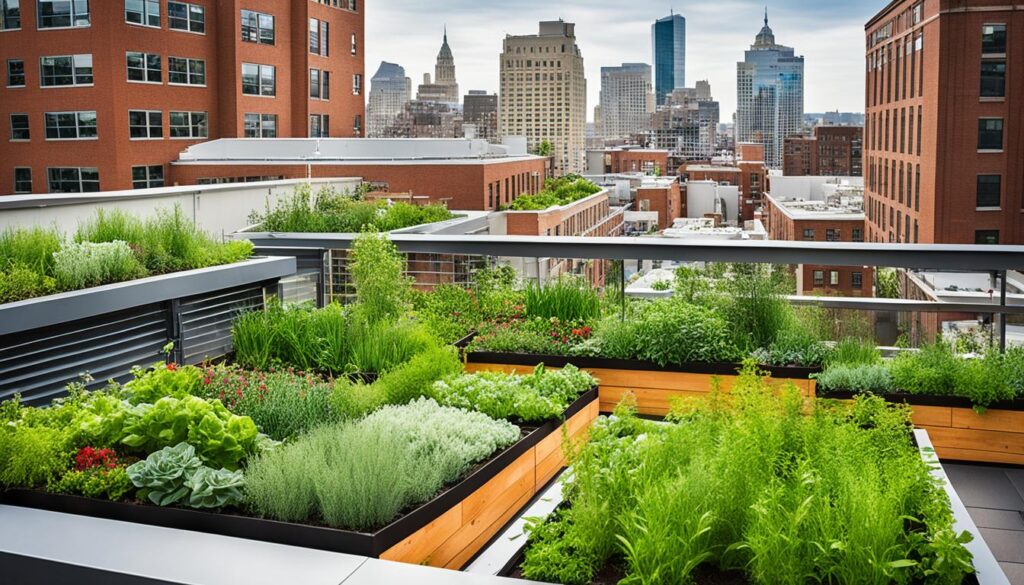
Conclusion
Rooftop gardening is changing cities, making them greener and more beautiful. It helps solve environmental problems and makes cities better for everyone. By doing this, rooftop gardens make cities more sustainable and resilient.
As cities grow, rooftop gardens help bring nature back into our lives. They make cities better places to live, work, and play. By using rooftops for gardens, we can make our cities greener and more enjoyable for the future.
By using rooftop gardens, we can make cities and nature work together better. This creates healthier, happier communities that can handle environmental challenges. Starting with rooftop gardens, we can make our cities better places to live, one garden at a time.
FAQ
What is rooftop gardening?
Rooftop gardening is when people grow vegetables, herbs, and flowers on rooftops in cities. It gives a local source of food and helps reduce city living’s negative effects.
What is the difference between rooftop gardens and green roofs?
Rooftop gardens and green roofs are not the same. Rooftop gardens focus on growing plants for food or decoration. Green roofs aim to make buildings better for the environment by covering roofs with plants.
What are the environmental benefits of urban rooftop gardens?
Rooftop gardens cool cities, cut down on air conditioning use, and reduce energy needs. They manage stormwater, improve air quality, and support city wildlife, boosting biodiversity.
What are the different types of rooftop gardens?
Rooftop gardens can be container gardens, using pots and planters, or raised bed gardens. Raised beds offer a deeper soil layer for bigger plants or small trees.
How are rooftops being used for urban agriculture?
Rooftops are now popular for growing food in cities. People, including restaurants and homeowners, grow crops on rooftops. This helps with food security and cuts down on the environmental harm from long food transport.
What are the challenges of establishing rooftop gardens?
Setting up rooftop gardens faces issues like building strength and roof safety. Other challenges include wind exposure, water and power access, and the need for ongoing care.
How can rooftop gardens be designed innovatively?
Rooftop gardens can be made into spaces with seating, paths, and greenhouses for gardening all year. They can host social events, workshops, and community activities.
How do rooftop gardens foster community engagement?
Rooftop gardens bring people together, sharing skills and resources. They’re places to learn about sustainable living, healthy eating, and gardening.
What sustainable practices are used in rooftop gardening?
Sustainable gardening includes using plants that need little water and care, efficient watering systems, and composting. Gardeners might also try hydroponics and aquaponics to save water and cut waste.

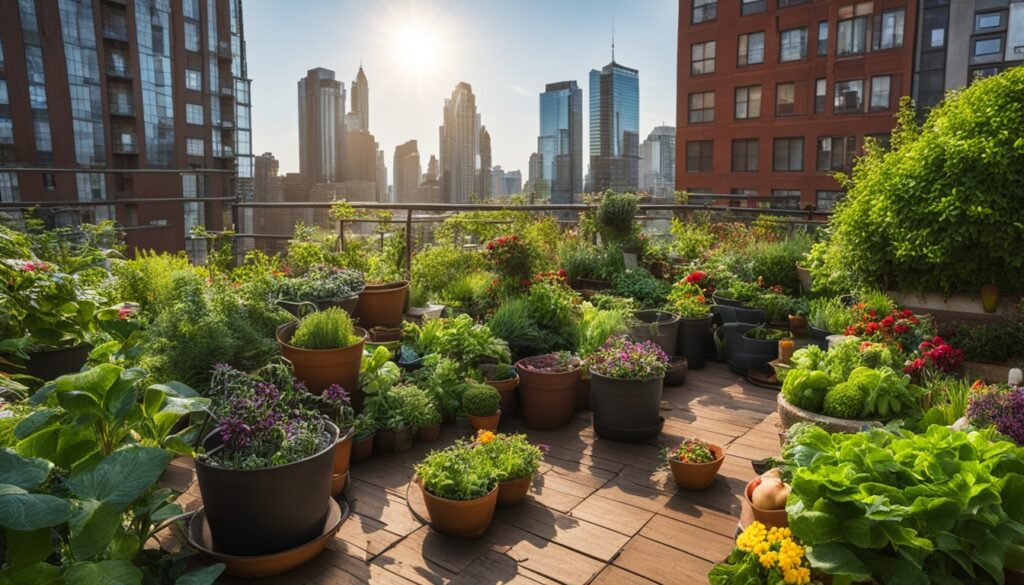
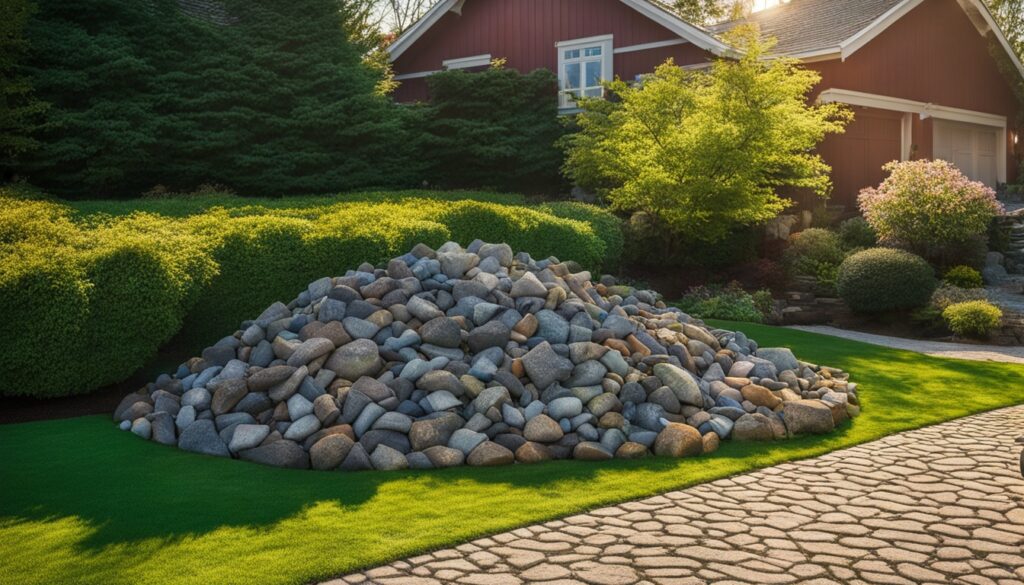
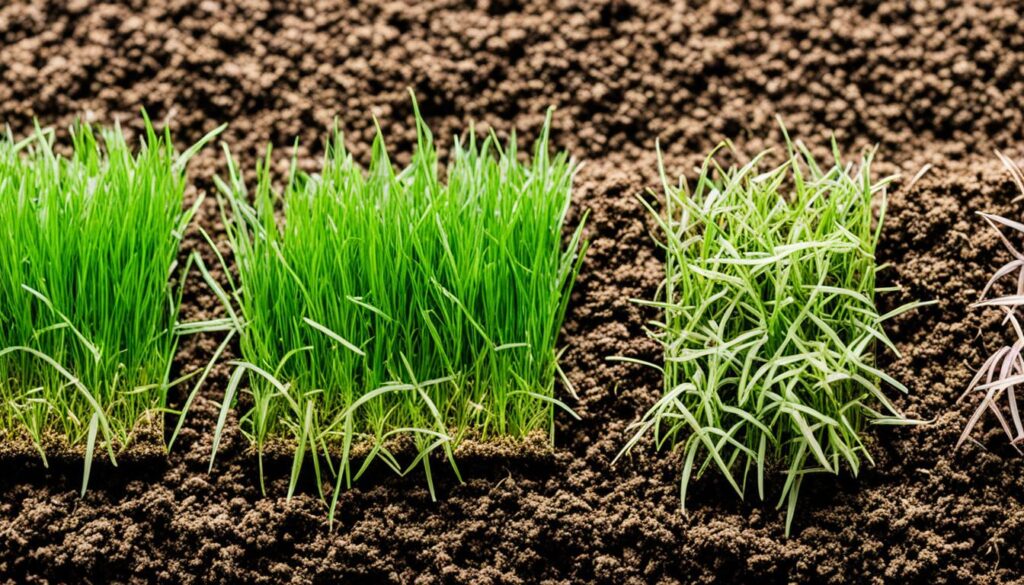
Thanks for sharing. I read many of your blog posts, cool, your blog is very good.
Someone necessarily help to make severely posts I’d state.
This is the first time I frequented your website page
and up to now? I surprised with the research you made to create
this actual post extraordinary. Magnificent job!